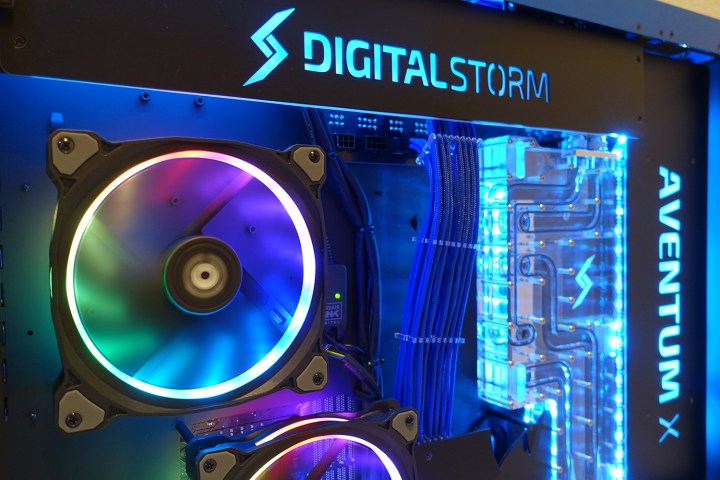
Digital Storm, which is known for flashy, powerful, and highly customizable gaming PCs, is looking to expand its reach. It will be launching a new lineup of Lynx desktops later in 2019, targetting more mainstream gamers looking for the best in performance and quality in a PC, but with affordable prices starting at just $800.
Taking in over 17 years of experience with enthusiast PCs, the new Lynx desktops provide a new level of customization and design at lower price points. There are a total of four new configurations launching under the Lynx lineup, in all of which the memory, storage, and graphics can be customized via a configurator. Pricing comes in at $800, $1,000, $1,500, and $2,000. Higher-priced options come with more powerful internals, but the lowest cost model comes with budget-friendly elements.
We begin with the $800 configuration. This comes with the AMD Ryzen 3 2200G CPU, and Nvidia GTX 1050 graphics with 2GB memory. Also on board is 8GB of DDR4 RAM and a 2TB 7,200 rpm hard drive. Elsewhere, it comes with air cooling, internal RGB lighting, 4 RGB fans, a 600-watt gold-rated PSU, and support for the A320M motherboard.
The $1,000 configuration steps up both the graphics and the processor to the AMD Ryzen 5 2600, and the Nvidia GTX 1050 Ti with 4GB of memory. It keeps the same 8GB DDR4 RAM and 2TB hard drive, but adds in a secondary 240GB solid-state drive for faster storage. The lighting, fans, cooling, and PSU, are the same as the entry-level model, but it is packing the M350M motherboard.
With the third $1,500 option, the processor and graphics get powerful with the AMD Ryzen 7 2700 processor and Nvidia RTX 2060 graphics with 6GB of memory. RAM also gets a step up to 16GB, but the storage options, cooling, fans, lighting, and PSU are the same as the $1,000 configuration. The only difference with this model is the X470 motherboard.
Finally, there is the highest end option, for $1,200. Likely for the most serious gamers, this comes with Intel’s Core i7-9700K processor and the latest Nvidia RTX 2070 graphics with 8GB of memory. The RAM comes in at 16GB, the primary hard drive stays at 500GB, but the secondary storage option increases to a faster 500GB M.2 SSD. Though the fans and internal lighting stay the same, this model packs in options for 240mm liquid cooling, the support for the Z390 motherboard, and a more power hungry 750-watt PSU.
All models come with lifetime support, and a 3 year limited warranty. “We’re proud to finally release Lynx, it’s a culmination of our passion and knowledge.” “It’s time for us to take our brand to the next level and provide gamers with a distinct solution,” said Harjit Chana, Digital Storm’s founder.
Editors' Recommendations
- The war between PC and console is about to heat up again
- These 5 PC upgrades are the biggest money wasters
- As a lifelong PC gamer, these are the apps I couldn’t live without
- Intel’s new CPU feature boosted my performance by 26% — but it still needs work
- New Nvidia update suggests DLSS 4.0 is closer than we thought


